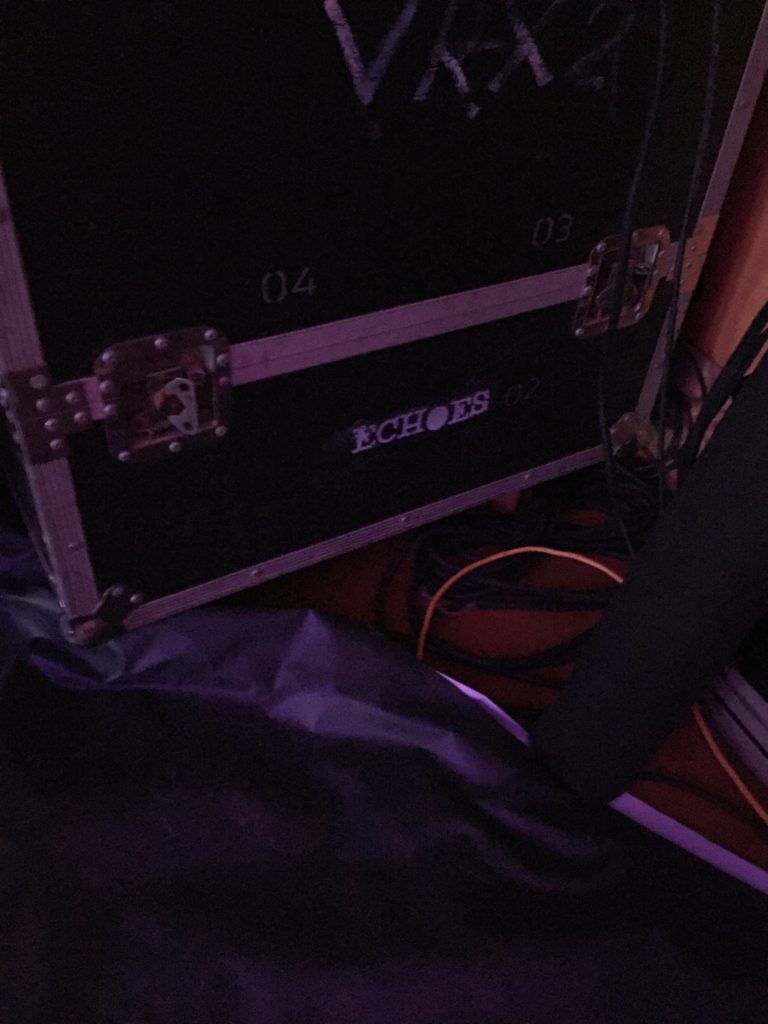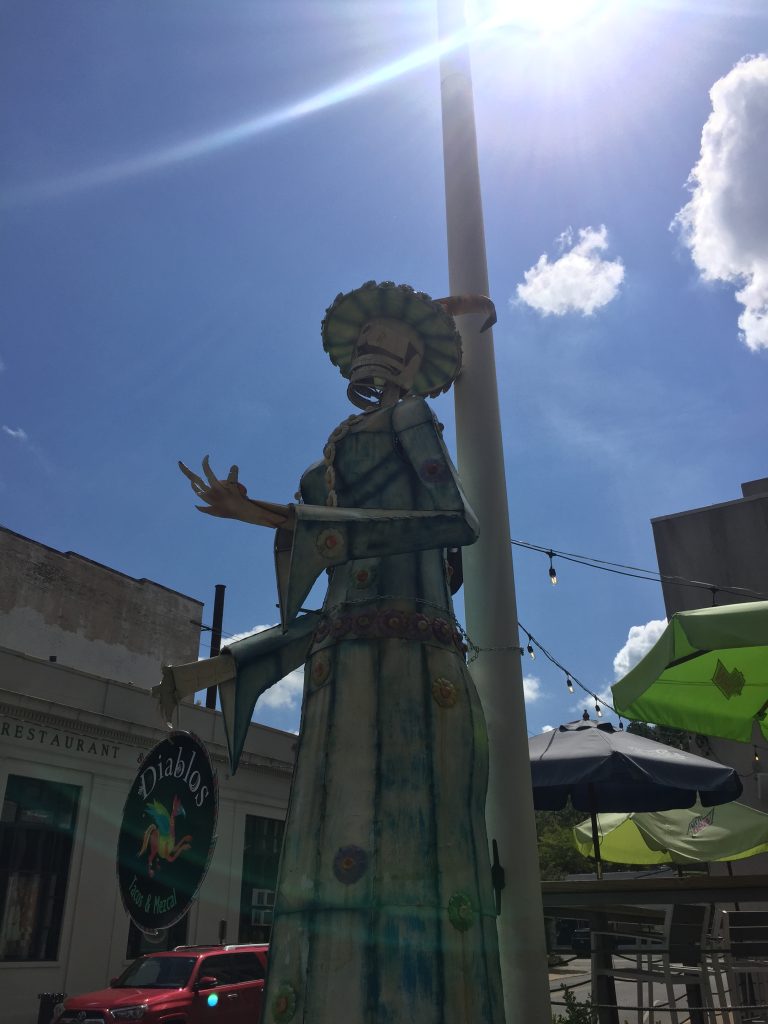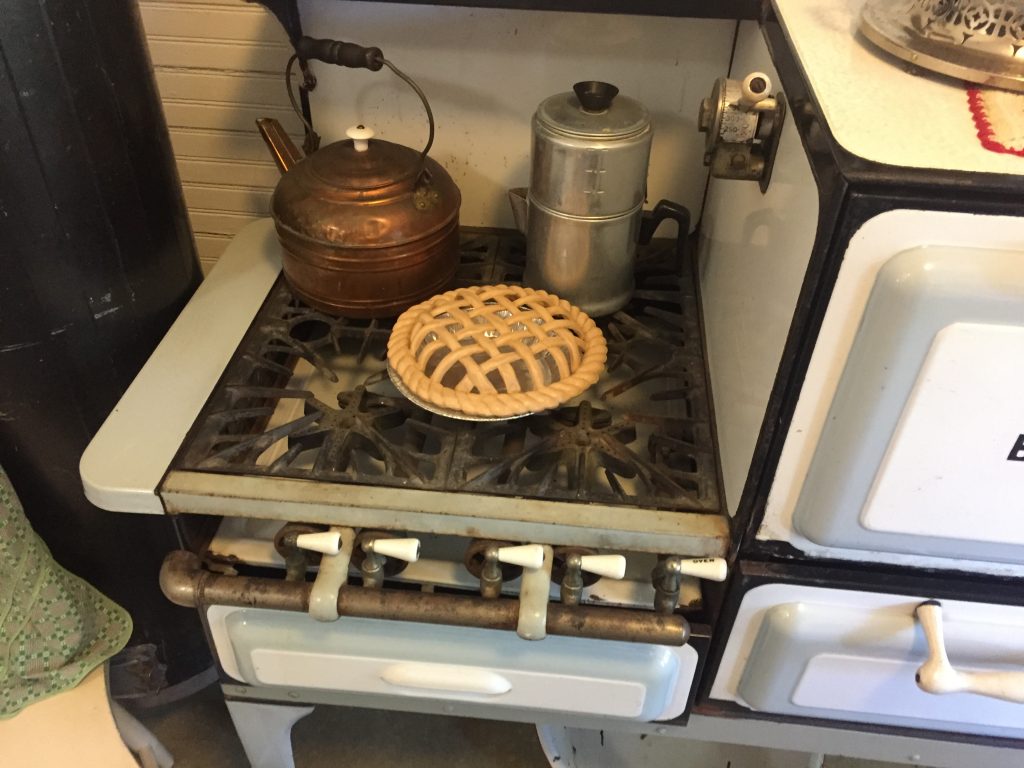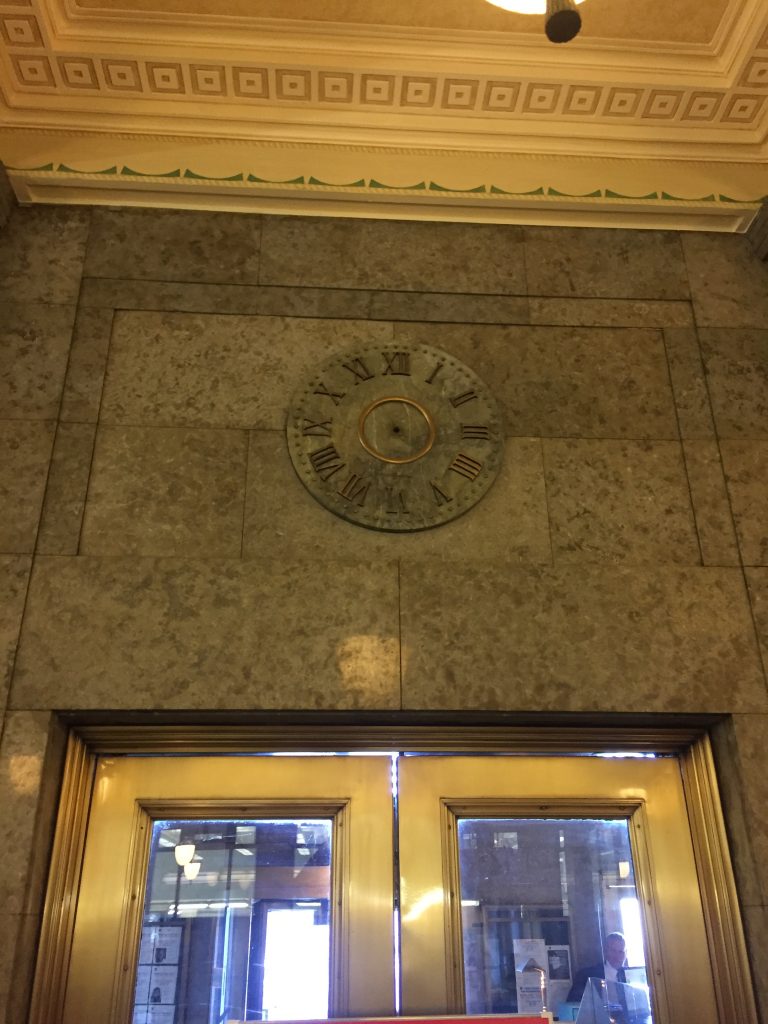echo chamber


‘What the temporary art scene lacks in brand recognition, it makes up for with an atmosphere that encourages flagrant experimentation, skirting the edge of style so closely that it often falls from it. Permanence taboos allow for the culling of anything too offensive but maintain a healthy system of memetic trends, ensuring artist output is predictable enough to hold the attention of outsiders and outrageous enough to be considered transgressive by those hoping to buy into the label. Breaching the taboos leads to the overabundance of health one might find in a horse’s unkempt hooves or a hamster’s unworn teeth- the familiar spirals into something monstrous, the monstrous kills the familiar.
‘The Unwashed Hopscotch’ on the streets of Belgard, New Mexico is the monster that consumes it. Spawned from the annual ‘Belgard Hopscotch Festival’ in 2016 (which has previously run without incident) the small town has seen so little rain in three years that a whimsical, chalk-based obstacle course that once stretched the length of a block now curls for miles in every direction. ‘The Unwashed Hopscotch’ has been in place long enough that the early stages have begun to wear into the pavement. Potholes are common and considered the only legal move by those who hope to complete one of the myriad branches of the labyrinthine hopscotch system that has grown in the absence of cleansing precipitation. Traps (as crude as broken glass and as clever as hinged boards) are discouraged, but present along the routes. Obstacles that require participants to maneuver into cafes, along busy streets, and across narrow alley ways while avoiding local authorities are considered fair game.
‘The Unwashed Hopscotch’ remained in Belgard for a year as a sort-of auxiliary destination aside the previously existing art scene before it began to draw the crowds that drew it, in turn. 2017 marked the first instance of active preservation: a group of visiting artists that had already made several attempts on the infamous ‘Birch Street Pass’ (where ‘The Unwashed Hopscotch’ descends into a narrow drainage trench) learned of a thunderhead forming in the south. They laid down tarps to protect the core and the ‘Pass’ so they could finish what they began, inadvertently violating the spirit of the festival and setting the precedent that later teams would maintain the paths they attempted (like strange, urban mountaineers).
Two years have passed and ‘The Unwashed Hopscotch’ continues to disrupt day-to-day business in Belgard, filling the streets with inattentive pedestrians and sucking life from the infrastructure that sustains it. Belgard artists, who sell hopscotch-related merchandise almost exclusively, have formed a militia that simultaneously highlights the piece’s fragility and protects it with force that borders upon illegality. The roads of inner-Belgard have degraded beyond any ability to sustain traffic and the Bell Guard patrols the outskirts in shifts. The town has fallen to ‘The Unwashed Hopscotch.’
We wonder what draws humanity to monsters, why cultists flock to grim deities and why soldiers march for despots.
Monsters pay well.’
I initially underestimate Shitholes in its description of the Bell Guard Militia and attempt to enter the town, on foot, without a permit. I am escorted out- not quickly, as one might expect, but via a route made circuitous by the protected winding of ‘The Unwashed Hopscotch.’ It turns out that my initial entry point was within a ‘sanctuary zone’ where some of the chalk lines have been eroded by wind from the desert. Only the Bell Guard and highly competitive hopscotchers are allowed there.
I’m taken to a gift shop where I pay a fine ($50) in order to pay for a day pass ($25). The permit comes with a piece of chalk and the expectation that I’ll be adding to the mess of Belgard (say what you will of the militia’s draconic preservation policies, they only add or improve routes during festival dates). My bag is searched and I’m forced to check anything that could potentially hold liquids into a locker. I’m verbally reminded of the serious consequences that would follow public urination. Several of the Guard escort me to Main Street, hopping service routes along the way but allowing me to simply step over the lines as an approved visitor.
The square at the center of town is darkened by a haphazard shelter that protects ‘The Unwashed Hopscotch’ core. Though more members of the militia watch over the area, I’m left to explore a three block radius of the town relatively unsupervised, its redundancies being enough to consider it non-fragile.
I didn’t enter Belgard with the intention of disturbing ‘The Unwashed Hopscotch’ but I find myself shuffling my feet through some of the lines all the same. I stop in part because some speculate the art piece is actually a complex sigil of protection- think a circle of salt on a massive scale. Mostly, though, my chafing at authority is dwarfed by my fear of it.
More embarrassing, perhaps, is that I try a few routes when I think I’m alone. My body has healed from the wounds of my early travel. I think I’m a healthier person, now, than I was when we began. I do well, well enough for an amateur anyway. I even manage a route that requires kicking off a wall and hopping up a short flight of stairs. At the end, someone has drawn the sunset in chalk with the word ‘Congratulations’ floating in the clouds and it occurs to me that this is the first thing I’ve finished in a long, long time.
-traveler

‘There is an illusion of chaos about the world and, though this writer’s experiences are isolated to a relatively thin realm, he can say for certain that very little of what happens on the ‘Wayside’ should be taken at face value, particularly in regards to patterned behavior. Having realized this independently, a woman known only by her internet handle, Rozzalind_420, managed to discover something new and, like most non-male innovators, she has been made to regret it. In publishing her discovery, the author hopes to take on a modicum of that suffering (though no man ever saved a witch by jumping on the pyre).
Rozzalind’s unspecified work involved relatively constant travel and, initially in jest, she created a blog in which she eloquently reviewed highway rest stops and rated them based on location, cleanliness, and ‘overall ambience.’ Rozzalind became a minor internet celebrity when a particularly damning review of a stop outside El Paso went viral, resulting in an investigation by the CDC and a state-issued apology.
The attention initially seemed to have almost no effect on the blog itself, which continued to churn out weekly or bi-weekly reviews. Critics suggested much of the writing was likely faked as Rozzalind seemed able to cover vast distances in relatively little time and would not describe what sort of job would have her so consistently on the road. She eventually admitted that posts were published out of order to avoid being easily followed and to keep the site active even when she was ‘working from the office.’ When these reasonable explanations failed to silence her ‘fans,’ Rozzalind disabled comments on the posts and went about business as usual.
Cut off from the world, Rozzalind’s sanity seemed to quickly decline. Her old rating system was supplemented by an increasingly complex ‘checklist’ of features that, to most, seemed relatively neutral in the grander scheme of things. At times, this checklist included things like ‘creaking door on stalls,’ ‘floor drain situated as to be viewable from toilet,’ ‘toilet paper installed to unravel in clockwise fashion (facing visitor),’ and ‘handprint on mirror.’ More to the point, the checklist was the first indication of ‘The Persistent Knocker.’
Rozzalind first noted ‘The Persistent Knocker’ in a series of posts on Mid-west toilets, describing the phenomenon of a person that enters a restroom and attempts to open a stall (normal behavior) and, finding it locked, tries at least once more (unnatural behavior, according to Rozzalind). She later began associating ‘The Knocker’ with, what many would assume, were phone numbers scrawled across (or carved into) the stalls but which she correctly deduced was a sort of cant left by ‘The Persistent Knocker’ that arrived when the stall was unoccupied.
Her audience having mostly jumped-ship, the public discovery of ‘Rozzalind Rooms’ would have remained muted if not for a sudden, panicked outcry by lurking members of several Rozzalind-adjacent forums and chatrooms hoping to find a quick means by which to contact her. Those who thought to re-visit the blog to see what all the fuss was about found the last post Rozzalind would ever publish: a short video of a masked woman (thought by most to be Rozzalind herself), slamming her body over and over into a locked stall until the door gives way, revealing a second door and, beyond that, a hidden bathroom.
‘Rozzalind Rooms’ are estimated to exist in at least 20% of American rest stops, always behind seemingly-locked stalls (built with an angled latch that slides up the door with each successive push and falls back into place under no pressure). Their historic exclusivity meant that they remained cleaner and quieter than traditional toilets, though accessing them bred the rest stop pest Rozzalind once dubbed ‘The Persistent Knocker.’ Rozzalind’s last post put a quick end to the secrecy and inspired a new generation of meddling vloggers, upsetting an ecosystem that had remained balanced for decades. Those clued in to ‘Rozzalind Rooms’ previous to the blog resent both the name and the loss of their roadside sanctuaries and Rozzalind, once well-respected for her work toward rest stop transparency, is now widely condemned for it.
The true condemnation belongs to the architect of this predator/prey duality who has instilled, in the traveler, a craving for privacy and an excuse to take it from others. Ghosts are harder to catch than witches, however, and they don’t burn nearly as bright.‘
-excerpt, Autumn by the Wayside

‘The surface of the Earth is many things, sometimes ugly and often melancholic, but, unsatisfied to the extent at which it was either, humanity looked to space for inspiration and the result was America’s ‘Lunar Wonderland.’ Adverts on cereal boxes and between episodes of beloved Saturday morning cartoons promised kids a true-to-life moon-walking adventure- something that eighties’ children and concept designers understood very, very differently.
Imagine the growing pit in a child’s stomach, then, as the family car crests the last hill before the touted ‘Lunar Wonderland’ to find it glowing eerily under a massive glass dome. Imagine that, through the windows, the child notices no other families inside. Imagine a theme park that has created and employed a state-of-the-art acoustic design method that swallows up sound in order to replicate the oppressive silence of space. Imagine, as a child, tripping into a shallow crater and being unable to hear your family call for you or to see them through the asbestos moon-dust that now coats your helmet, or to reach them due to the life-like heaviness of your child-sized replica space suit.
‘Lunar Wonderland’s’ ten-year run is impressive, considering the lengths it took to make itself as frightening as possible for its target audience. Like many of the eighties’ conceptual flops, it remains relatively intact in the deserts of the deep south, too plastic, really, to decompose and too expensive to dismantle (experts suggest that removing any part of the dome would spread a catastrophic amount of the aforementioned asbestos‘…like a child blowing apart a dandelion).’
More recently, millennial retro-lust has created a small market for ‘moonshine’ which, here, means paying a local to haul out and plug their generator into the ‘Wonderland’s’ grid. Parties otherwise too young to have witnessed the moon in its prime can experience the vacant terror of the lunar surface for the first time and eighties-kids, now grown, can exorcise the cool, white nightmares that pulse beneath pleasanter dreams.’
The local that offers me ‘moonshine’ insists that we arrive after dark and that I ride shotgun in his pick-up. His truck reeks of a cigarette-smoking grandfather, the smell far too stale to belong to anyone in his own generation. It reminds me of my own truck when the sun would dredge up the same sort of smells from between the cracks of the fake leather- perfume, body odor: ghosts of people still living.
‘Lunar Wonderland’ is dormant when we arrive, of course. The complex is larger than anything I could have possibly imagined and the false terrain beneath the dome glows, dimly reflecting the light of its real-life counterpart. When I circle back around to the man I find his upper-half fully engulfed by the conglomerate systems of the exposed machine. He emerges for air and startles to see me standing close.
“There’s a suit for you in the truck,” he says, “Your 30 minutes starts as soon as the lights come on.”
I take the hint and begin the lengthy process of pulling the space suit on. It’s small, for me, and shares the scent profile of the truck to intensely that I wonder if it isn’t the source, but the sudden quiet, the sudden protection from the desert wind severs my ties to the earth and instills a certain calm. I walk noisily back to the man and he says something, his voice too muffled by the helmet for me to understand. He waves, then, and leads me to the entrance where I see that the keypad on the outside glows with a small red light. When the man passes a haphazard card-key across it, the doors open and I step inside.
The false moon is glowing, now, and past an initial wave of fear I find myself stumbling with a bout of dizziness. The ground buzzes through the thick soles of the space boots and I understand that the surface of the moon, which rises from the floor like a wide hill, is rotating. The guides don’t mention this and it means that, embedded in the earth below me, is a scale replica of the moon in full. I turn to look back and the man motions to me through the glass. He scribbles ‘22’ in the dust, there: my remaining time.
Best get to it, then.
There is always a question of what it means to experience a site from Autumn by the Wayside. At the defunct ‘Lunar Wonderland,’ I content myself with sitting quietly is a small, dusty crater as the glowing replica earth passes overhead, shifting, occasionally, as the cumbersome suit digs into my back.
Before long I feel the incline of the surface sloping downward and see the man gesturing angrily through the glass. I’ve lost track of time- maybe fallen asleep. I stand on stiff legs and write back that I’m willing to pay for more. The man indicates something- a rate increase, potentially, but we walk away from the dome having reached some sort of accord.
The complex is a labyrinth of old ice cream parlors and souvenir shops so I seek out a service door and find someone has pried it open before me. The stairway beyond is plain but functional compared to the pageantry above. Navigating it in the suit proves difficult, however, and I’m out of breath by the time I find the next door. It’s labeled: ‘Dust Recollection and Filter Access.’
‘Moon dust’ pours from the room as I swing the door open, covering the boots of the space suit. I begin to itch, inwardly, and hope that the locked-in smell of smoke is a testament to the suit’s tight chemical barrier. The floor inside is coated with the stuff and illuminated by the far wall- a wide portion of the moon’s rotating surface. There are brushes in place, seemingly to collect and redistribute the dust on the floor, but a powdery mountain has formed where there should be an outgoing belt and so it builds here instead.
I dig the pile out, finding several generations’ worth of lost-and-found items in the process including dozens of small flags likely planted by those who purchased moonshine like me. I wonder, briefly, if I’ll ever travel abroad and decide that I probably won’t.
The lowest level exits into the basement of the complex where a full half of the glowing replica is laid bare. The material is translucent where the powder has been brushed away completely except for a thin, rust-colored line off the center. I puzzle over this inclusion for a while, trying to remember what I’d learned of the moon in elementary school science, when I stumble though a pile of asbestos dust and upon a flattened space suit inside of which is the flattened body of a woman. In the moment of inspection I manage before revulsion sets in, I realize that she, like me, had reached into the filter and she, unlike me, had been pulled into orbit.
In the light of the rotating ceiling I see the patches on her suit indicate arrival on the same imaginary spacecraft as mine and for the second time in a matter of weeks I’m reminded that I am alone again. The Editor likely wouldn’t have stopped me putting my arm in the filter and she probably wouldn’t have been able to pull me out in time, but she would have been there to understand how I met my end. Where did they look for her when they realized she was gone? Could their guesses have ever come close to something like this?
The false moon darkens abruptly and, except for the glowing afterimage of the red-projected ring, the room is cast into darkness. I’m forced to feel my way back to the surface, a punishment the man above seems to think is fitting enough for keeping him so long. It gives me time to remember the dangers of the ‘Wayside,’ the long drops and the small spaces.
-traveler

‘‘The Shining Face of Seattle’ is actually an hour outside the city but the name sticks all the same. It’s positioned far enough into the wooded acreage of an otherwise unremarkable rest stop that it sees little traffic, but travelers who happen to read the signs outside the bathroom will have no trouble identifying the short path that leads to the statue. It is not uncommon to see others moving that way.
The origin of the statue is entirely unknown. Bolts at the base suggest there may have existed a dedicating plaque but it has been missing long enough that its absence is clear in all existent pictures of ‘The Shining Face.’ The statue itself depicts a man in bronze, doubled over but looking up and forward, as though struggling to finish a race. His clothes suggest a modern sculptor (which makes the absent history all the more strange) and the foundations of a second, small platform that may have once held the object of his gaze can be found ahead of him in the brush. The man’s metal has oxidized black with the exception of his face which, local lore would have you believe, grants preternatural foresight to those who rub it. As one might expect, it shines.
What many don’t expect is that the ‘The Shining Face’ has worn so thin over the years that its features have smoothed or collapsed entirely, forming something like a gaping mask. Guesses regarding ‘The Face’s’ emotional state vary from terrified to ecstatic, these interpretations being reflected in the poses of those who post pictures of the statue online. One may wrap his arm around the statue’s shoulders as though consoling him, for instance, and another may bend nearby as though bowled over by the same hilarious joke.
There are surprisingly few pictures of people actually rubbing the statue, a phenomenon that can be attributed to an entirely different local tradition- booby-trapping the face. The only evidence of this dates back to 2013 when pranksters filled ‘The Shining Face of Seattle’ with raw meat (presumably pressing it through the smoothed mouth and eyes) so that when a group of scouts approached to place their hands on the metal, several bloated rats streamed out of the head. A clip of the incident can be found with a simple internet search. Legend would suggest that, at other points in time, ‘The Face’ has been covered in glue, electrified, filled with insects, wired to screech at being touched, and that the mouth has been widened, sharpened, and turned inwards so that an unwitting visitor might reach for a light inside and find themselves trapped by lips made razor, though why anyone would attempt-’
There was a time, not so long ago, when the Editor would read aloud from Shitholes as we approached a site, preparing us for what we were about to experience. In the span of a week I’ve fallen back on old habits, which is to say, I’ve gone back to skimming the entries.
It’s grown dark except for the lit eyes of ‘The Shining Face of Seattle.’ I’ve left ‘Autumn by the Wayside’ in the bike’s trailer, along with my pack- along with most of what I own. I twist for a view of the trail and feel the razor-mouth of ‘The Face’ peel back another quarter-inch of skin. The lower half of my jacket’s sleeve was cut cleanly away in my initial attempt to get free. The bare arm inside is cold and wet with blood.
My left hand fumbles, again, for my cellphone. I scroll through my contacts and reach the bottom of the list in three short seconds.
Nobody is coming.
-traveler
© 2024 · Dylan Bach // Sun Logo - Jessica Hayworth